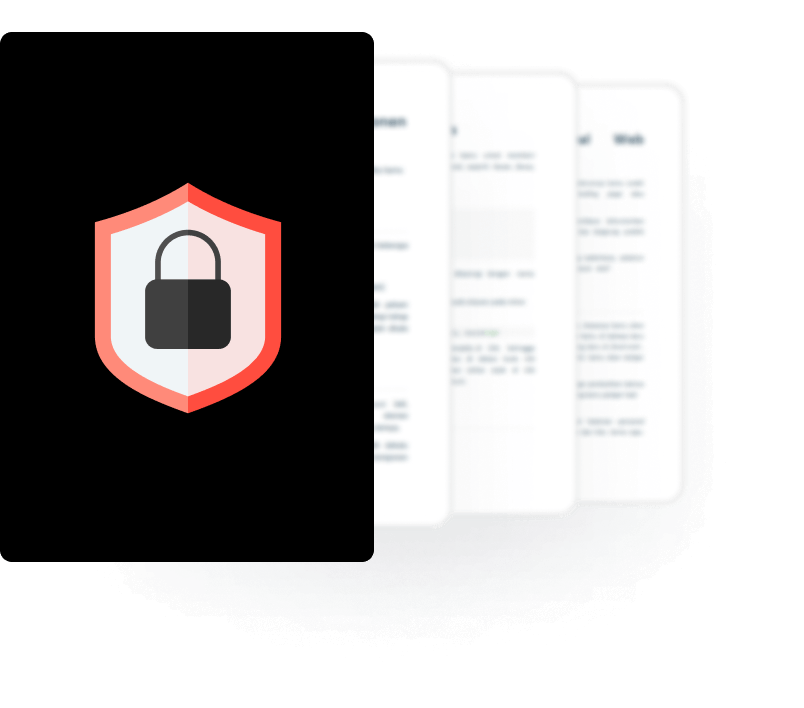
BLOG

BLOG
Mobile teams are adopting this approach from day one to boost productivity, facilitate cross-team collaboration, and shorten release cycles.
As mobile apps become the primary gateway to business and customer data, embedding security into every stage of development isn’t a luxury—it’s a necessity.
DevSecOps is the mobile game-changer. Integrate security into every sprint to secure apps without slowing releases.
Secure code starts with your pipeline. Enforce branch protection, signed commits, and secret scanning to stop vulnerabilities at the source.
Automate testing at every layer. Build in static analysis (SAST), API scanning, and dynamic testing (DAST) to catch issues early and often.
Know your dependencies inside out. Track every SDK, enforce version pinning, and scan for runtime risks across your mobile supply chain.
Set a governance foundation. Map security to OWASP MASVS/Mobile Top 10, log findings, audit exceptions, and review posture quarterly.
Monitor and respond swiftly. Leverage runtime telemetry, backend logs, and red-team simulations to stay attack-ready on real mobile threats.
Unlike web apps, mobile applications operate in unpredictable, hostile environments across thousands of devices, OS versions, and networks that can never be fully controlled.
Attackers exploit this. They’re constantly poking at the soft spots: insecure storage, leaky APIs, outdated third-party code, you name it. The threat landscape is just too fast and too uncertain for traditional, after-the-fact security checks to keep up.
That’s where DevSecOps flips the script. Instead of treating security as a regulatory, last-minute step, you bake it right into your CI/CD pipeline—automated, continuous, and impossible to ignore. Security becomes part of your app’s DNA, not an afterthought.
This checklist serves as your go-to blueprint for building secure mobile apps by integrating security gates, automating checks, and hardening your code at every stage of the Software Development Life Cycle (SDLC).
No code should reach production without reviews. Mandate branch protection rules and thorough code reviews to prevent insecure or unauthorized changes.
Every commit should be traceable and verifiable. This ensures that only trusted code is included in your app.
Automate scanning to ensure that credentials, tokens, or API keys are never committed.
Remind developers to check for sensitive data usage, proper encryption, and permission handling before merging.
Use SAST tools like Appknox to catch vulnerabilities early, before code is merged or shipped.
Set severity thresholds that align with your risk appetite to avoid high-severity issues slipping through.
Align your static analysis with OWASP MASVS and your organization’s security policies for maximum relevance.
Know exactly which third-party SDKs and libraries your app uses. Maintain visibility to manage risk and ensure compliance with licensing requirements.
Regularly scan dependencies for vulnerabilities, privacy violations, or unsafe behaviors.
Lock library versions to prevent unverified updates or regressions sneaking in at runtime.
Use DAST tools (like Appknox) to simulate real-world attacks in a safe environment on real devices.
Test for insecure authentication, data leakage, and other API-specific vulnerabilities.
Make dynamic and API security testing a mandatory, automated step before every app release.
Map your controls to OWASP MASVS and the OWASP Mobile Top 10 to standardize security practices.
Maintain detailed records of vulnerabilities identified and fixes implemented. This ensures audit readiness and traceability.
Track any accepted risks, who approved them, and why.
Regularly review and update your DevSecOps practices to address new threats and lessons learned from incidents.
Use tools like Crashlytics and Firebase to detect crashes, abuse, or hooking attempts in real time.
Integrate detection for token theft and abnormal patterns into your backend logs.
Prepare playbooks for reverse engineering attempts, credential leaks, and other mobile threats.
Test your defenses with simulated attacks, including fake apps and tampered APKs, to validate your incident response.
While this checklist focuses on securing the mobile app development lifecycle, it’s critical to secure the CI/CD pipeline itself as a foundational layer.
Protecting the pipeline ensures that the mobile app’s build, test, and deployment processes remain trustworthy and free from tampering or unauthorized access.
|
Secure source code practices |
|
|
Task |
Notes |
|
Enforce branch protection and code reviews |
Prevent insecure or unauthorized changes to main codebases |
|
Require signed commits and enforce GPG verification |
Validate the integrity and authorship of code |
|
Scan for hardcoded secrets in commits |
Ensure no sensitive credentials or tokens are checked in |
|
Add mobile-specific security reminders to PR templates |
Reinforce checks for sensitive data usage, encryption, and permissions |
|
Static analysis (SAST) |
|
|
Integrate static code analysis into CI/CD pipelines |
Use tools (like Appknox, for example) to identify issues early during builds |
|
Block builds on critical/high-risk issues |
Define severity thresholds aligned with your security posture |
|
Tailor rulesets to mobile-specific standards |
Align with OWASP MASVS and organizational policies |
|
Third-party dependency and SDK checks |
|
|
Inventory and track third-party SDKs used in the app |
Maintain visibility into potential risks and licensing issues |
|
Scan SDKs and libraries for known security risks |
Detect privacy violations, data collection, or unsafe behaviors |
|
Enforce version pinning for all external libraries |
Prevent unverified updates or runtime regressions |
|
Dynamic and API security testing |
|
|
Perform automated dynamic analysis in staging environments |
Use Appknox DAST to simulate real-world attacks |
|
Validate APIs against common mobile threats |
Ensure protection against insecure authentication, data leakage, and other threats. |
|
Include these tests in CI workflows for every build |
Automate as part of your pre-release quality gates |
|
Compliance and governance |
|
|
Align checks with frameworks like OWASP MASVS, OWASP Mobile Top 10 |
Ensure standardized mobile security practices |
|
Document security findings and remediation history |
Maintain audit readiness and traceability |
|
Maintain a register for approved risk exceptions |
Track risks accepted by stakeholders and reasons for deferral |
|
Review DevSecOps posture quarterly |
Continually improve based on threat landscape and incident learnings |
|
Monitoring, logging, and incident readiness |
|
|
Use runtime mobile telemetry (Crashlytics, Firebase) to detect anomalies |
Look for signs of abuse or hooking |
|
Integrate API abuse detection into backend logs |
Monitor token theft, abnormal patterns |
|
Build response runbooks for mobile-specific incidents |
Include reverse engineering and credential leaks |
|
Conduct a red team simulation for mobile (test for fake apps, tampered APKs) |
Validate incident detection and containment steps |
|
Area |
Key items |
|
Source Code |
🔲 PR security checks, |
|
SAST |
🔲 CI-integrated, |
|
Dependencies |
🔲 CVE scans, |
|
DAST & API Scans |
🔲 Automated DAST, |
|
CI/CD |
🔲 Vaulted secrets, |
|
Governance |
🔲 Compliance mappings, |
|
Monitoring |
🔲 Abuse detection, |
DevSecOps for mobile is not a checkbox—it’s a culture shift. By embedding these practices into your SDLC, you empower your teams to innovate quickly, release confidently, and protect your users’ trust.
Begin with this checklist, adapt it to your specific workflows, and establish security as a shared responsibility from the outset.
Secure your mobile DevOps pipeline today
Don’t leave your mobile app security to chance. Empower your team to catch vulnerabilities early, automate compliance, and accelerate secure releases—all with Appknox.
DevSecOps integrates security practices into every stage of the mobile app development lifecycle to ensure that security is a priority from day one. DevSecOps empowers teams to automate security, make it continuous, and embed it into the SDLC from planning to deployment.
Traditional DevOps focuses on speed and collaboration between development and operations, whereas DevSecOps adds a dedicated security layer, automating vulnerability detection and remediation throughout the CI/CD pipeline.
A robust DevSecOps toolchain includes Static Application Security Testing (SAST), Dynamic Application Security Testing (DAST), Software Composition Analysis (SCA), and Runtime Application Self-Protection (RASP) to cover all stages of app security.
No, not at all. With the right tools and automation, DevSecOps can be integrated smoothly, enhancing security throughout the development lifecycle, helping you deploy secure apps faster.
Automation incorporates best security practices across each app development stage. A few notable benefits of automation include:
Appknox offers automated, binary-based VA that integrates seamlessly with CI/CD pipelines and provides continuous monitoring for both pre-production and post-production app security.

